Rugs and Wall Colours: Harmonising Your Home Palette
Unless you hire an interior designer, your house’s walls are painted a standard colour. Not many people colour-coordinate their homes, meaning your house probably has a mix of different hues.
If that’s the case, keep reading to find out how to create harmony with colour.

Generally, darker colours are used to add personality and a sense of whimsy, whereas lighter colours have a calming effect. Bold colours are often set aside because they can be too overwhelming. This is why homeowners go with neutral colours.
Colour harmonisation in interior design involves selecting colours that work well together to create a pleasing and cohesive look in your home. It's all about achieving balance and unity in your colour choices. Creating a harmonious palette is all about balancing the colours so that the décor looks visually appealing.
Interior Design Golden Ration: 60-30-10 Rule

According to the Golden Ratio of interior design, the best way to create harmony with colours is to choose a dominant colour that covers 60% of the space, a secondary colour that covers 30%, and the remaining 10% is an accent colour.
The Key to Decorating with Harmonious Colours
Harmony is created with two colour schemes:
- Monochromatic: This scheme uses different shades and tones of a single colour. It creates a subtle and sophisticated look. Example: Red – Burgundy, Paprika, Madder, Red and Cardinal.
- Analogous: This scheme includes colours that are neighbours on the colour wheel. Using these colours together creates a cohesive feel. Example: Green, blue-green, and blue.
Harmonious colours are usually paired with neutral colours, such as grey, cream, white, and beige. Colours such as red, blue, and yellow pair well with neutral colours. Green, orange, and purple are vibrant colours and are usually incorporated in the interior pastel shades. Refrain from using two vibrating colours together because they will overshadow each other.
Colour Psychology
- Red: Is associated with passion, energy, and warmth. It can be an excellent choice for social spaces like the living room or dining room.
- Blue: Is a calming colour that evokes a sense of tranquillity. It's ideal for bedrooms and bathrooms.
- Yellow: This is an uplifting and cheerful colour. It brightens up home offices and kitchens.

- Green: Is associated with nature. It's a versatile colour suitable for various rooms in your home.
- Purple: Conveys creativity and luxury. It's an excellent choice for accent walls or elements.
- Orange: Is an optimistic colour that rejuvenates the spirit. It works best in entertainment rooms and kitchens.
Harmonising Your Interior
Creating a balanced room depends on your rug, furniture, and wall colours. For example, let’s say that you are going for minimalism. The idea behind minimalist décor is “less is more.”.
It's about simplifying your living space to the bare essentials and focusing on functionality. This décor type involves a neutral colour scheme, simple furniture, and a sense of serenity.
Here’s how you use rug colour coordination and harmonise your room around it:
- Choose a colour scheme and then the accompanying colours
Note: If you paint the walls a darker shade, buy vibrant furniture and pastel-coloured rugs.
- Paint beams and columns in different shades to make them stand out
- Centre-align the rug or place it close to the sofa set so that it creates an attractive sight
The function of the room should influence your choice of rug colours. For example, in a living room, you might want warm and inviting colours, while in a home office, you might opt for calming and focused hues. White and blue is a timeless combination that screams elegance. A blue rug with white accents works well in traditional-themed rooms.
Rugs are great elements of visual interest, which is why pairing them in the right colour with your furniture plays an essential role in interior décor. Whether you opt for classic combinations or experiment with unique palettes, the right rug can help achieve perfect harmony in your living space.
The Rugs offers a large selection of colourful and stylish rugs. The company sources only the finest materials, ensuring your rug looks exquisite and stands the test of time. Not sure which rug will best harmonise with your décor? Check out our blog for inspiration. For more information, get in touch with us through Live Chat.
Carpet and Wall Colours: Creating Harmonious Interiors
Selecting the right combination of carpet and wall colours can transform your living space. Consider using complementary colours for a bold look or analogous colours for a more subtle effect. Light-coloured walls paired with darker carpets can create depth, while matching tones can make a room feel larger. Remember to factor in natural light, as it can significantly impact how colours appear. Experiment with accent walls to add visual interest without overwhelming the space.

Carpet and Wall Color Combinations: Balancing Aesthetics and Atmosphere
The perfect carpet and wall colour combination can set the mood for any room. Neutral walls paired with vibrant carpets can create a lively atmosphere, while muted tones in both can foster a calm environment. Consider using the 60-30-10 rule: 60% dominant colour (walls), 30% secondary colour (carpet), and 10% accent colour (accessories). Don't forget to take into account the room's purpose and natural lighting when making your selections.
Carpet and Wall Color: Foundations of Interior Design
The relationship between carpet and wall colour forms the basis of your room's aesthetic. Contrasting colours can create a dynamic space, while monochromatic schemes offer a sophisticated look. Consider the undertones in both your carpet and wall colours to ensure they complement each other. Remember that lighter colours can make a room feel more spacious, while darker hues can create a cosy atmosphere.
Carpet and Wall Color Combinations Bedroom: Crafting Restful Retreats
In bedrooms, the right carpet and wall colour combination is crucial for creating a relaxing environment. Cool tones like blues and greens can promote tranquillity, while warm hues like beige and soft yellow can create a cosy atmosphere. Consider using darker carpets with lighter walls to ground the space, or vice versa for a more airy feel. Don't forget to factor in the colour of your bedding and furniture when making your selections.
Should Rug Match Wall Color: Exploring Design Possibilities
The decision to match your rug to your wall colour depends on your design goals. Matching colours can create a seamless, cohesive look, while contrasting colours can add visual interest. Consider using a rug that incorporates the wall colour as an accent for a subtle connection. Remember that texture can also play a role in how well a rug complements wall colour, even if the hues don't match exactly.
What Colour Rug with Green Walls: Complementary Choices
Green walls offer a versatile backdrop for various rug colours. Earth tones like brown or beige can create a natural, grounded feel. For a bolder look, consider complementary colours like pink or purple. Neutral rugs in grey or cream can soften the impact of vibrant green walls. Don't forget to consider the shade of green when selecting your rug colour to ensure a harmonious pairing.
Should Carpet Match Wall Color: Exploring Design Principles
Matching carpet to wall colour is a personal design choice that can create different effects. Matching colours can make a room feel larger and more cohesive, while contrasting colours can add depth and interest. Consider using different shades of the same colour for a subtle, sophisticated look. Remember that lighting can significantly impact how well carpet and wall colours work together.
Rugs Color: Exploring Palette Possibilities
The colour of your rug can significantly impact your room's overall aesthetic. Bold, vibrant colours can serve as a focal point, while neutral tones can provide a versatile foundation. Consider the existing colour scheme in your room when selecting a rug colour. Don't forget to factor in practicality – darker colours or patterns can be more forgiving in high-traffic areas.
What Color Rug Goes with Blue Walls: Harmonious Pairings
Blue walls provide a versatile backdrop for various rug colours. Warm tones like orange or yellow can create a striking contrast, while cool greys can offer a serene, cohesive look. Consider patterned rugs that incorporate blue to tie the room together. Don't forget to take into account the shade of blue on your walls when selecting your rug colour.

Rug Painting Ideas: Customising Your Floor Coverings
Painting rugs offers a unique way to customise your decor. Consider using stencils for precise patterns or freehand designs for a more organic look. Geometric shapes can add a modern touch, while floral motifs can create a softer aesthetic. Remember to use fabric paint specifically designed for rugs to ensure durability. Always test your paint on a small, inconspicuous area first.
Wall Rugs Hanging: Textile Art for Vertical Spaces
Hanging rugs on walls can add texture and warmth to your interiors. Consider tapestry-style rugs for a traditional look or modern, abstract designs for contemporary spaces. Smaller rugs can create interesting focal points, while larger pieces can serve as dramatic backdrops. Remember to use appropriate hanging hardware to ensure your wall rug is securely displayed.
Rugs on Walls: Unconventional Decor Statements
Using rugs as wall hangings offers a unique way to add texture and colour to your space. Flat-woven rugs often work best for this purpose due to their lighter weight. Consider grouping smaller rugs for a gallery-wall effect or using a large, statement rug as an alternative to wallpaper. Remember to properly secure your wall-hung rugs to prevent damage to both the rug and your wall.
Wall Carpet Design: Textural Elements for Vertical Surfaces
Wall carpets can add warmth, texture, and sound absorption to your interiors. Consider geometric patterns for a modern look or traditional motifs for a classic feel. Textured designs can create interesting shadows and depth. Remember to choose materials suitable for vertical application and consider the room's purpose when selecting your wall carpet design.
Rugs as Wall Decor: Elevating Vertical Spaces
Using rugs as wall decor can transform your living spaces. Vintage rugs can add character and history, while contemporary designs can create a modern focal point. Consider framing smaller rugs for a polished look or draping larger pieces for a more relaxed feel. Don't forget to consider the colour and texture of your wall rug in relation to your existing decor for a cohesive look.
People Also Asked
Should your rug match your wall color?
Your rug doesn't need to match your wall color exactly. Instead, choose a rug that complements the wall color or picks up accent colors from your decor for a cohesive look.
Should walls be darker than carpet?
Generally, walls should be lighter than the carpet to create a sense of openness. However, this rule can be broken for dramatic effect or in well-lit spaces.
Should rugs be neutral or colorful?
The choice between neutral or colorful rugs depends on your room and preferences. Neutral rugs offer versatility, while colorful rugs can make a statement or tie together a room's color scheme.
How do you match wall art to a rug?
Match wall art to a rug by:
- Coordinating colors from the rug in the artwork
- Choosing art with complementary tones
- Balancing patterns and textures
- Considering the overall style of both elements
Should a rug be darker or lighter than the floor?
There's no strict rule, but a rug that contrasts with the floor often creates visual interest. Lighter rugs on dark floors can brighten a space, while darker rugs on light floors can ground the room.
What color rug makes a room look bigger?
Light-colored rugs, especially in white, cream, or pale gray, can make a room appear larger. Solid colors or subtle patterns also contribute to a more spacious feel.
Should rugs go all the way to the wall?
Rugs don't need to go all the way to the wall. Leave 6-12 inches of floor space around the rug's edges for a balanced look. In larger rooms, use rugs to define specific areas.
How do I choose a rug that matches?
Choose a matching rug by:
- Considering your room's color scheme
- Matching the style of your furniture
- Selecting appropriate size and shape
- Balancing patterns and textures
- Considering the room's function
What color rug goes with dark walls?
With dark walls, consider:
- Light-colored rugs for contrast
- Rich, jewel-toned rugs for depth
- Patterned rugs with both light and dark elements
- Neutral rugs to balance the room
Should a sofa be lighter or darker than carpet?
There's no strict rule, but often a sofa that contrasts with the carpet creates visual interest. Consider the room's overall color scheme and desired atmosphere when choosing.
How to match carpet to wall color?
Match carpet to wall color by:
- Choosing a complementary shade
- Using the same color family but different tones
- Selecting a neutral carpet to work with various wall colors
- Considering the room's lighting and size
Which color carpet goes with everything?
Neutral-toned carpets like beige, gray, or taupe are versatile and go with most decor styles and color schemes. These colors provide a flexible foundation for various design choices.
What is the most popular carpet color right now?
Currently, popular carpet colors include:
- Gray tones for a modern look
- Warm neutrals like beige and taupe
- Soft blues for a calming effect
- Multi-tonal patterns for added interest
Should rug be same color as walls?
A rug doesn't need to be the same color as walls. Instead, choose a rug that complements the wall color or picks up accent colors from your decor for a cohesive look.
What are the timeless carpet colors?
Timeless carpet colors include:
- Beige for versatility
- Warm gray for a modern yet classic look
- Taupe for a neutral base
- Soft earth tones for a natural feel
Is grey or beige carpet better?
The choice between grey and beige carpet depends on your style preferences and existing decor. Grey offers a modern look, while beige provides warmth and versatility. Consider your room's lighting and color scheme.
Does a dark carpet make a room look bigger or smaller?
Generally, a dark carpet can make a room look smaller by absorbing light. However, when paired with light walls and proper lighting, it can create depth and coziness without necessarily shrinking the space.
Should flooring be lighter or darker than walls?
Traditionally, flooring is darker than walls to ground the space. However, modern design often breaks this rule. Consider factors like room size, natural light, and desired atmosphere when deciding.
Does floor color affect the wall color?
Yes, floor color can affect wall color perception. Dark floors can make walls appear lighter, while light floors might make wall colors seem more intense. Consider the interplay when choosing colors.
Should a rug be darker or lighter?
The choice between a darker or lighter rug depends on your room's needs. Light rugs can brighten and enlarge a space, while dark rugs can add coziness and ground a room.
What color rug with dark walls?
With dark walls, consider:
- Light-colored rugs for contrast
- Rich, jewel-toned rugs for depth
- Patterned rugs with both light and dark elements
- Neutral rugs to balance the room
What is the best color for a rug?
The best rug color depends on your room and preferences. Neutral tones like beige or gray are versatile, while bold colors can make a statement. Consider your room's color scheme and desired atmosphere.
What color carpet goes with everything?
Neutral-toned carpets like beige, gray, or taupe are versatile and go with most decor styles and color schemes. These colors provide a flexible foundation for various design choices.
How to choose carpet and wall colors?
Choose carpet and wall colors by:
- Considering the room's function and atmosphere
- Selecting a color scheme that complements your furniture
- Testing samples in different lighting conditions
- Balancing light and dark elements
- Considering current trends and timeless options
Does a dark wall make a room look bigger or smaller?
Dark walls typically make a room look smaller by absorbing light. However, when used strategically (e.g., on an accent wall) and paired with proper lighting, they can add depth and create a cozy atmosphere.
What rug colors make room look bigger?
Rug colors that make a room look bigger include:
- Light neutrals like cream or beige
- Soft, cool tones like pale blue or gray
- Monochromatic designs with subtle patterns
- Reflective materials like silk or viscose blends
Is carpet supposed to be darker than walls?
Traditionally, carpet is often darker than walls to ground the space and hide dirt. However, modern design allows for flexibility. Consider factors like room size, lighting, and desired atmosphere when choosing.
How should a rug look in the living room?
In the living room, a rug should:
- Anchor the seating area
- Be large enough for all furniture legs to sit on it
- Complement the room's color scheme
- Add texture and visual interest
- Define the conversation area
Should wall color be lighter than floor?
Typically, wall color is lighter than the floor to create a sense of openness and height. However, this rule can be broken for dramatic effect or in well-lit spaces.
Should all walls in a room be the same color?
Not necessarily. While uniform wall color creates cohesion, using an accent wall or complementary colors can add visual interest and depth to a room. Consider the room's size and function when deciding.
Is a dark carpet trendy?
Dark carpets can be trendy, especially in modern and minimalist designs. They add depth and sophistication to a space. However, trends vary, so consider your long-term preferences and the room's characteristics.
Should rugs match the wall?
Rugs don't need to match the wall exactly. Instead, choose rugs that complement the wall color or incorporate accent colors from your decor for a cohesive look.
How do you match a rug to a room?
Match a rug to a room by:
- Considering the existing color scheme
- Complementing the furniture style
- Choosing the appropriate size for the space
- Balancing patterns and textures
- Reflecting the room's function and atmosphere
What culture puts rugs on wall?
Hanging rugs on walls is common in various cultures, including:
- Persian and Turkish traditions
- Moroccan interior design
- Native American communities
- Russian folk customs
Should carpet be lighter or darker than furniture?
There's no strict rule, but often carpet that contrasts with furniture creates visual interest. Consider the room's overall color scheme and desired atmosphere when choosing.
Is a dark or light rug better for a small room?
Generally, a light rug is better for a small room as it can make the space appear larger and brighter. However, a dark rug can work if balanced with light walls and proper lighting.
What colors should my rug be for the room interior design?
Choose rug colors that complement your existing decor. Consider the room's color scheme, desired atmosphere, and whether you want the rug to be a focal point or blend in.
Should a rug go to the wall?
Rugs don't need to go all the way to the wall. Leave 6-12 inches of floor space around the rug's edges for a balanced look. In larger rooms, use rugs to define specific areas.
Should rug be darker than walls?
There's no strict rule, but often a rug that contrasts with the walls creates visual interest. Consider the room's overall color scheme and desired atmosphere when choosing.
How do I match my wall and carpet?
Match wall and carpet by:
- Choosing complementary colors
- Using the same color family but different tones
- Selecting a neutral carpet to work with various wall colors
- Considering the room's lighting and size
How do you pair wallpaper and rugs?
Pair wallpaper and rugs by:
- Coordinating colors from the wallpaper in the rug
- Balancing patterns and textures
- Using a solid rug with patterned wallpaper (or vice versa)
- Considering the overall style and mood of the room
How to design a living room with an area rug?
Design a living room with an area rug by:
- Centering the rug in the seating area
- Ensuring all furniture legs are on the rug
- Complementing the room's color scheme
- Using the rug to define the conversation area
- Adding layered textures with throw pillows and blankets
Should rug match wall color?
A rug doesn't need to match the wall color exactly. Instead, choose a rug that complements the wall color or picks up accent colors from your decor for a cohesive look.
Which color carpet goes with everything?
Neutral-toned carpets like beige, gray, or taupe are versatile and go with most decor styles and color schemes. These colors provide a flexible foundation for various design choices.
What color rug makes a room look bigger?
Light-colored rugs, especially in white, cream, or pale gray, can make a room appear larger. Solid colors or subtle patterns also contribute to a more spacious feel.
What color rug goes with dark walls?
With dark walls, consider:
- Light-colored rugs for contrast
- Rich, jewel-toned rugs for depth
- Patterned rugs with both light and dark elements
- Neutral rugs to balance the room
Should carpet be darker or lighter than walls?
For a balanced look, carpet should generally be darker than the walls. This creates a grounding effect and makes the room feel more cohesive. Darker carpets also hide dirt and stains better, making them practical for high-traffic areas. However, in smaller spaces, a lighter carpet can help create an illusion of more space when paired with similarly light walls.
Should a rug be lighter or darker than the floor?
A rug should typically be darker than the floor to anchor the space and create visual interest. This contrast helps define seating areas and adds depth to the room. However, if your goal is to brighten a dark room, a lighter rug on a dark floor can achieve this effect. The key is to ensure there's enough contrast to make the rug stand out as a distinct design element.
What colour rug makes a room look bigger?
Light-colored rugs, especially in neutral tones like beige, cream, or light gray, can make a room appear larger. These colors reflect more light, creating an airy, open feel. Additionally, rugs with subtle patterns or textures can add depth without overwhelming the space. For a bold approach, a large rug with vertical stripes can elongate the room, making it feel more spacious.
What color carpet is timeless?
Neutral shades are the most timeless choices for carpet colors. Beige, taupe, and light to medium gray offer versatility and longevity in design. These colors provide a classic backdrop that can adapt to changing decor trends. For a slightly bolder yet still timeless option, consider a soft, muted blue or green, which can add a touch of color while remaining neutral enough to stand the test of time.
Should your sofa be lighter or darker than walls?
The sofa can be either lighter or darker than the walls, depending on the desired effect. A darker sofa against lighter walls creates a focal point and adds depth to the room. Conversely, a lighter sofa on darker walls can brighten the space and make it feel more open. The key is to ensure enough contrast for visual interest while maintaining a harmonious color scheme in the overall room design.
Should wall art match rug?
Wall art doesn't need to match the rug exactly, but they should complement each other. Look for art that picks up one or two colors from the rug to create a cohesive look. Alternatively, choose art that provides a pleasing contrast to the rug's dominant color. The goal is to create a balanced visual connection between the floor and walls without being overly matchy.
Which colour carpet goes with everything?
Neutral-toned carpets are the most versatile and go with virtually everything. Beige, gray, and taupe are excellent choices that can adapt to various decor styles and color schemes. These colors provide a flexible foundation for your room, allowing you to easily change other design elements without clashing with your carpet. For those who prefer a bit more color, soft blues or greens can also work as versatile, near-neutral options that pair well with many color palettes.
Related Blog Posts
Nature's Palette: Incorporating Biophilic Design with Seasonal Rugs
How to Create A Perfect Colour Palette In Your Home
Related Rug Collections




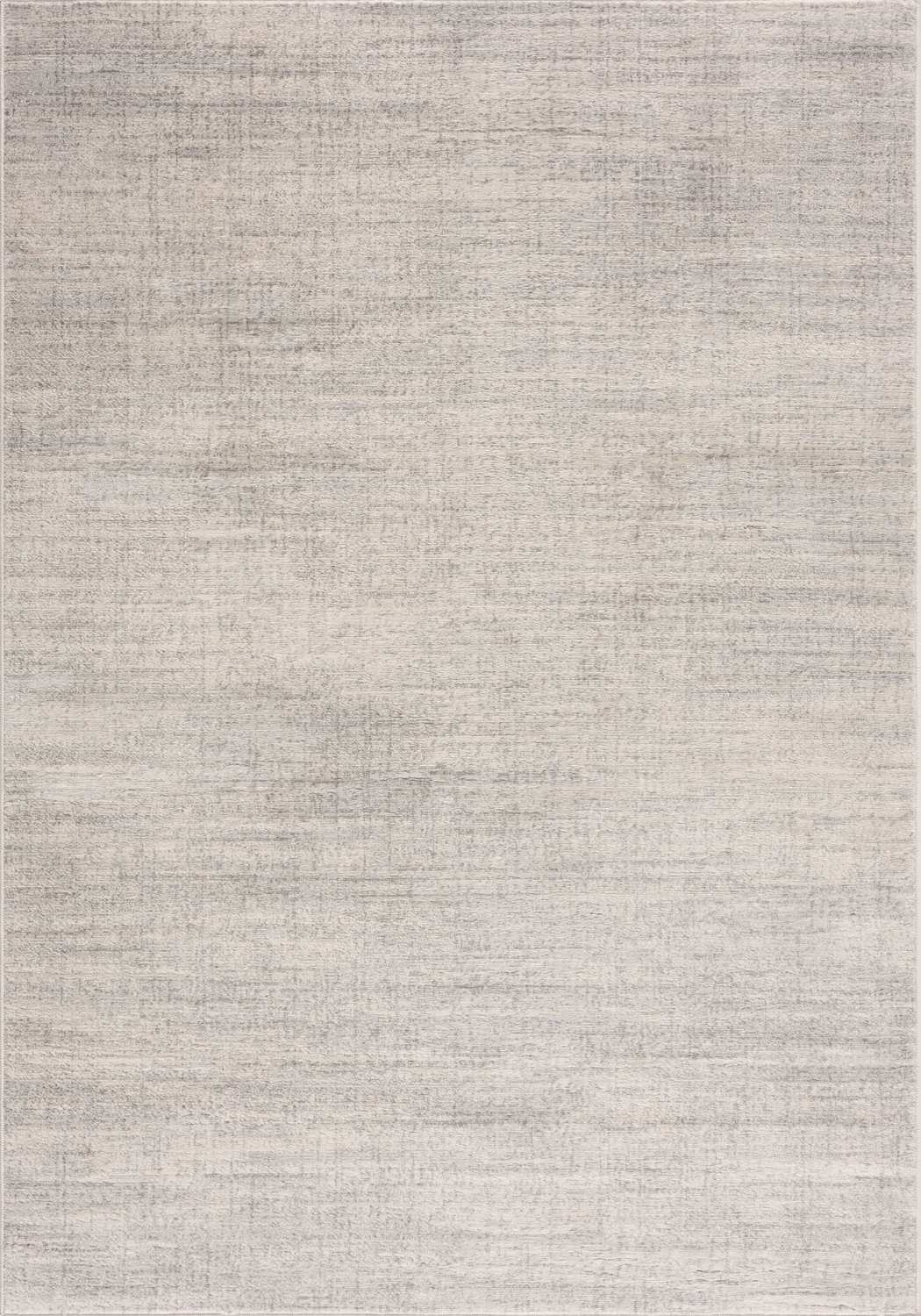
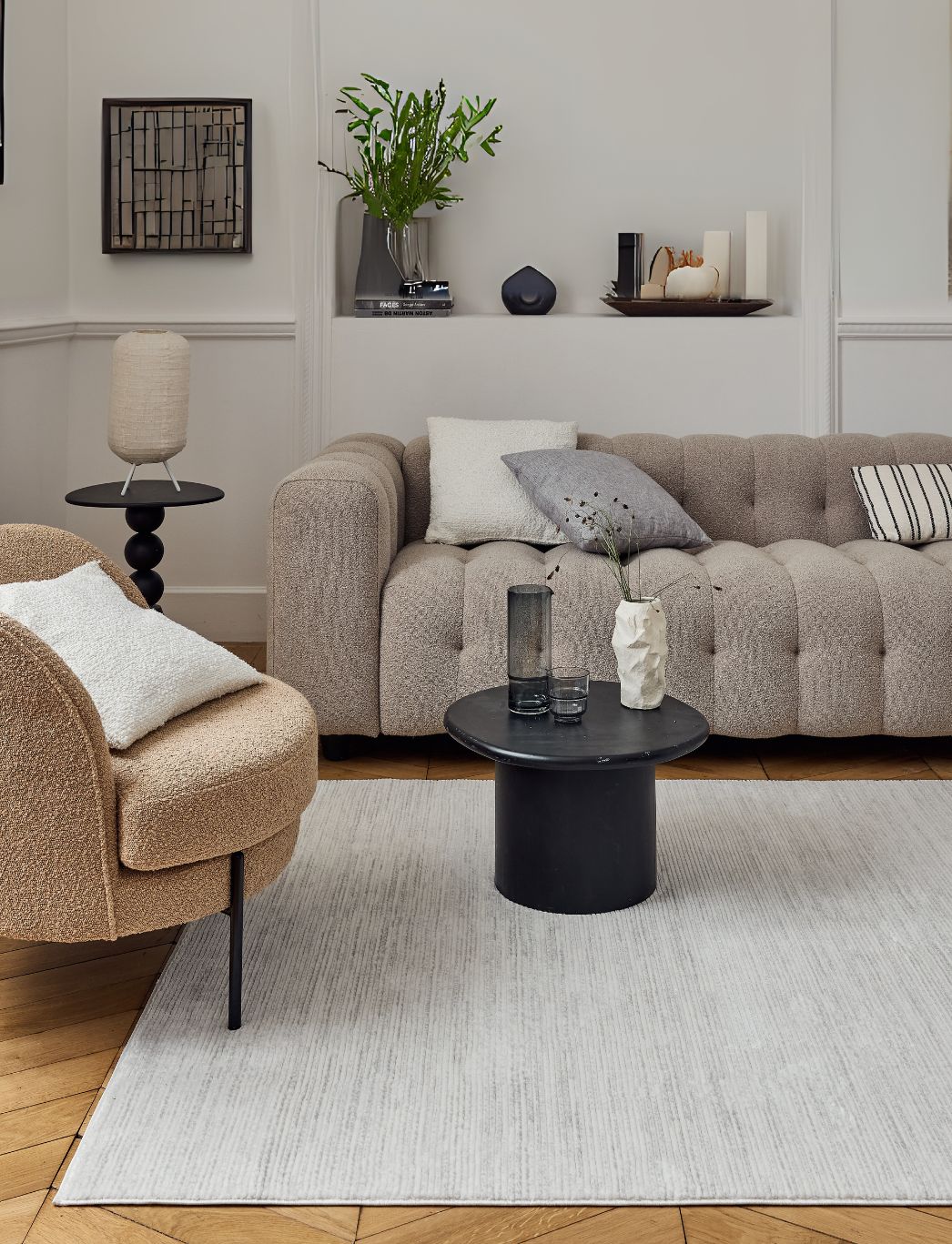
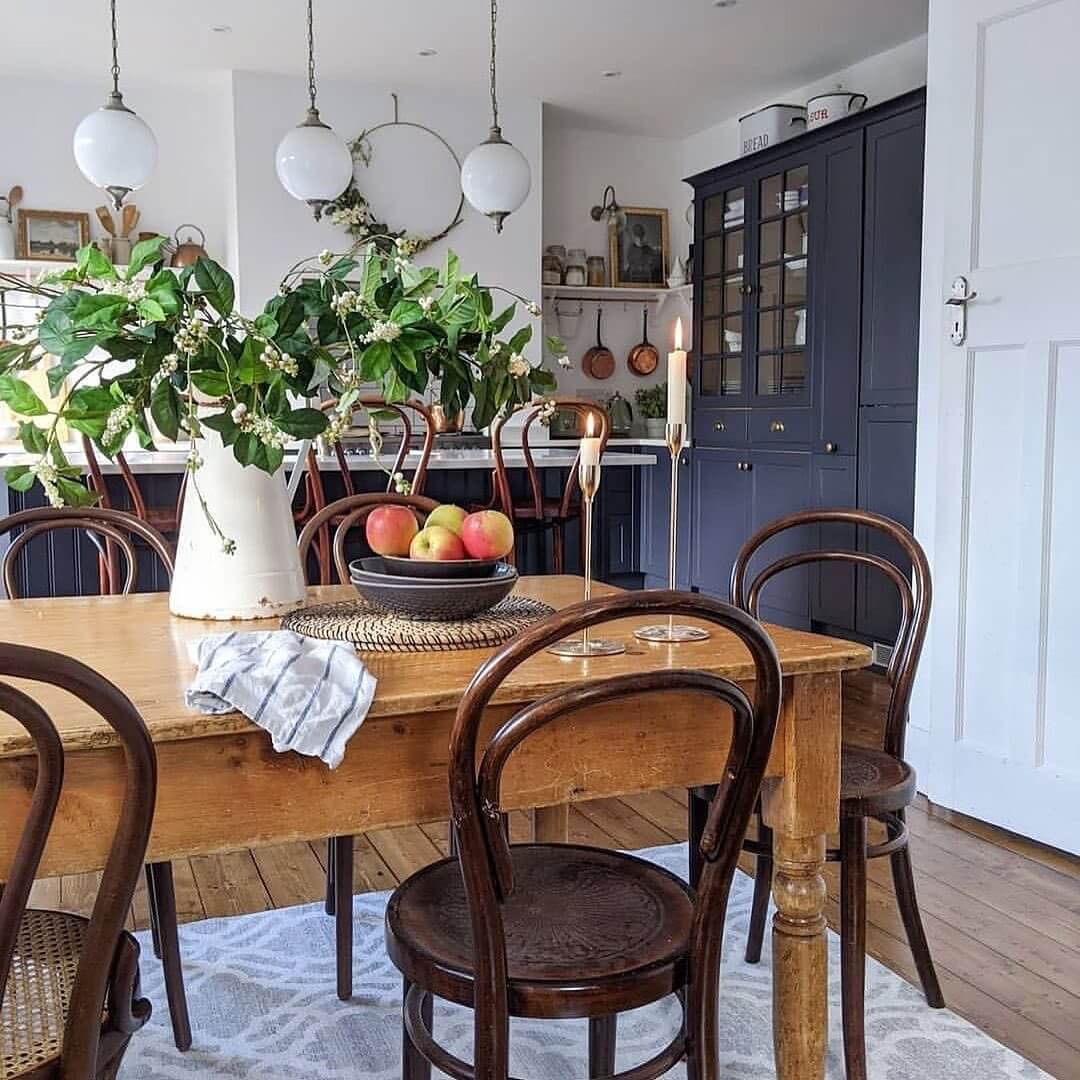
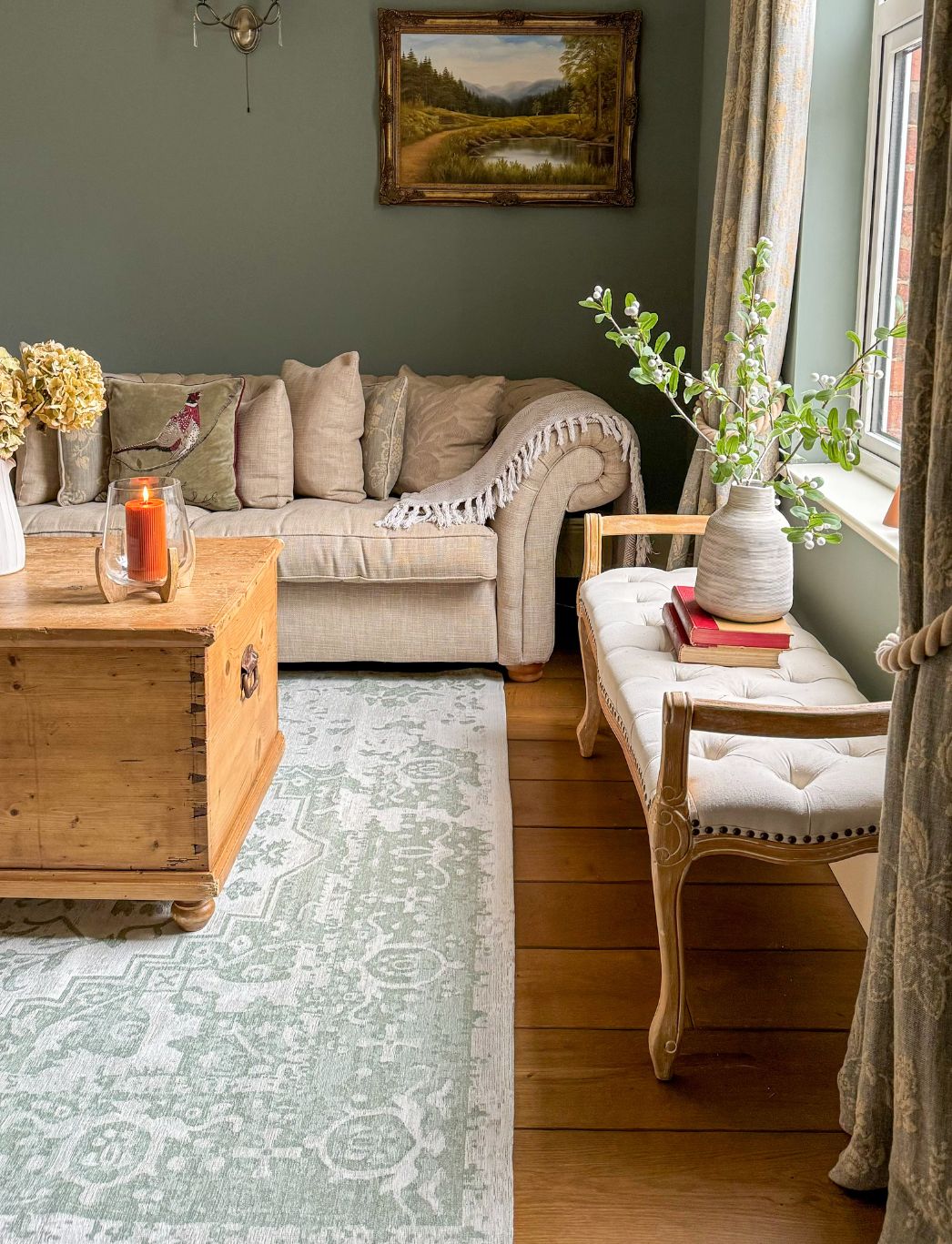
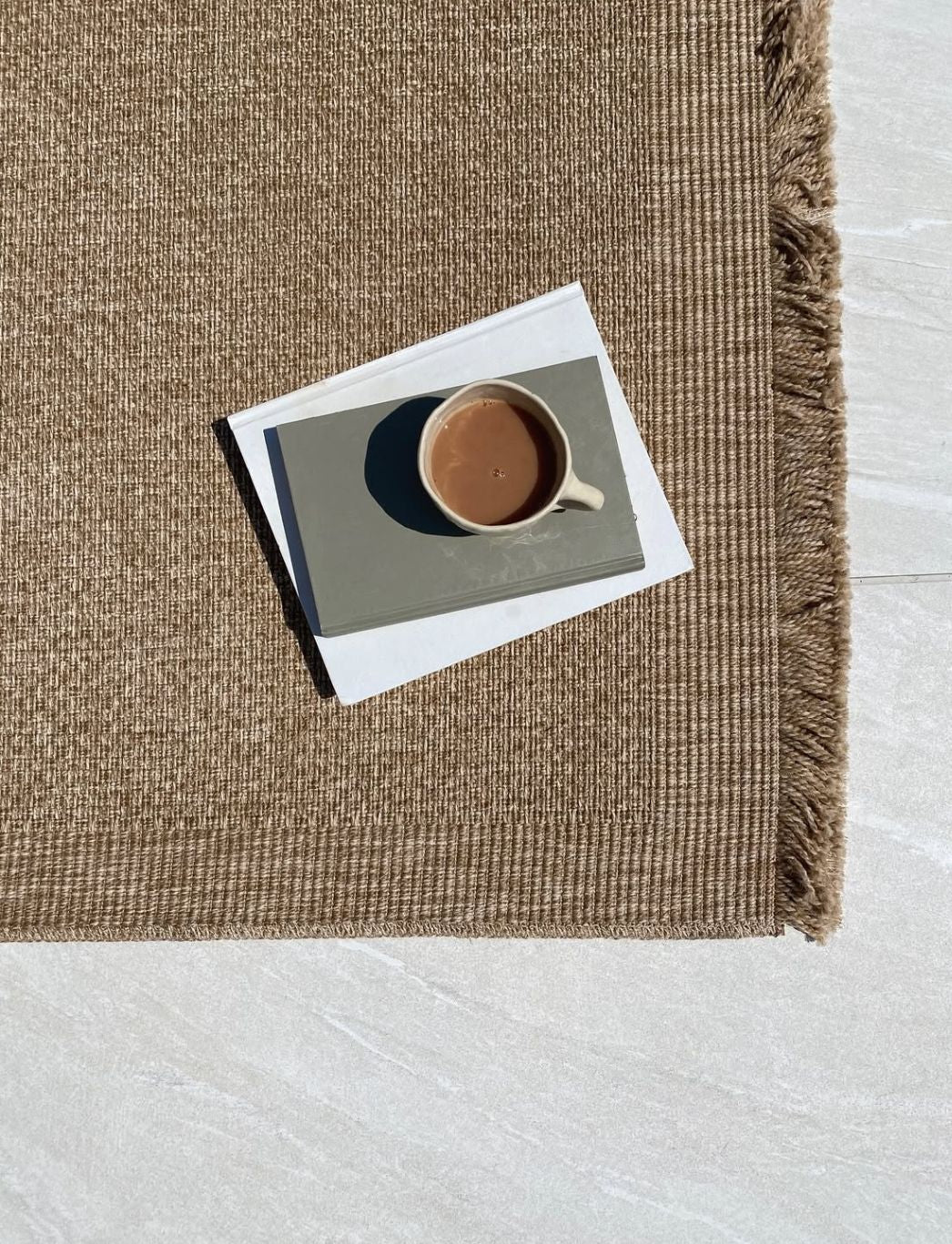
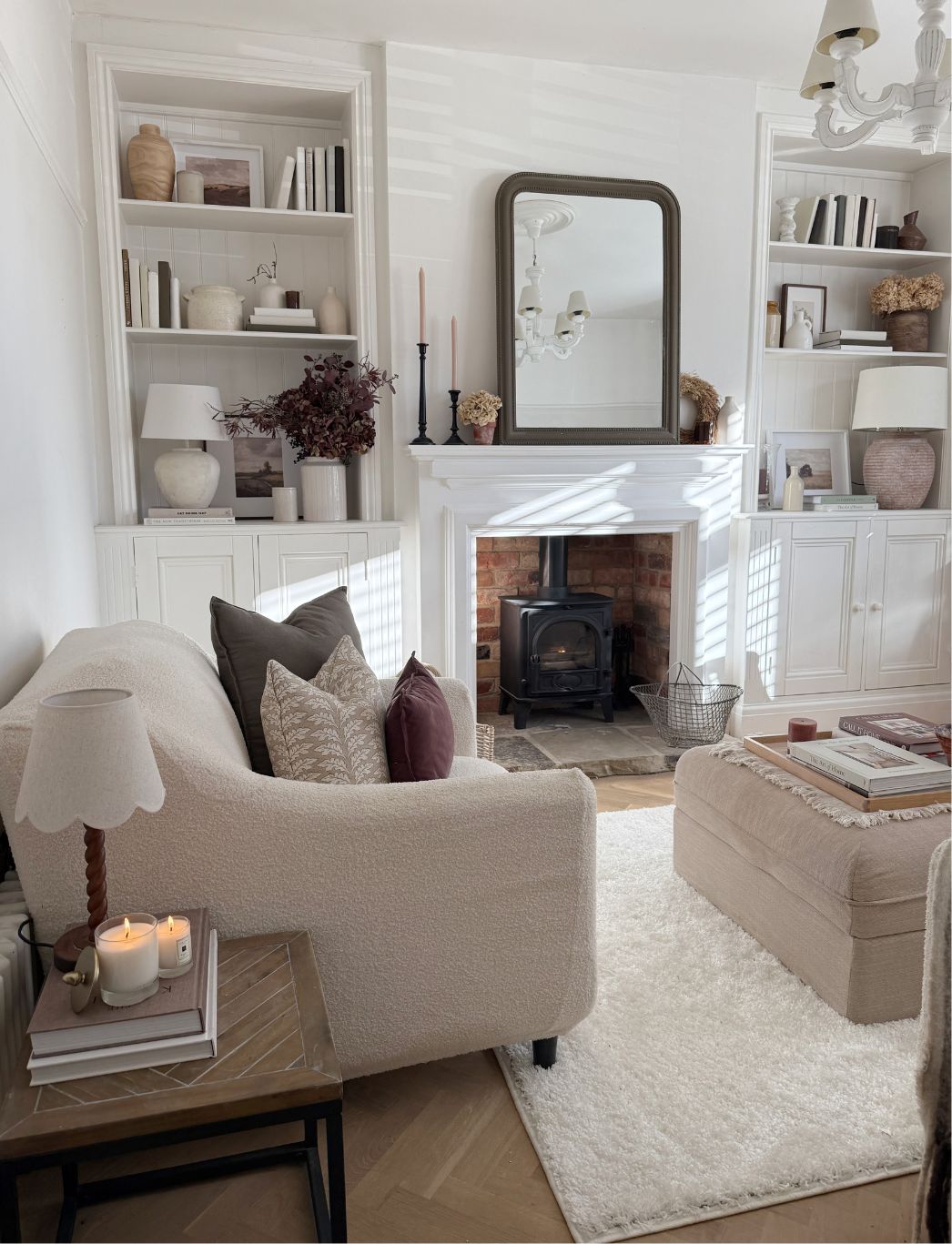
Leave a comment